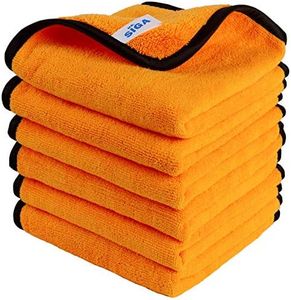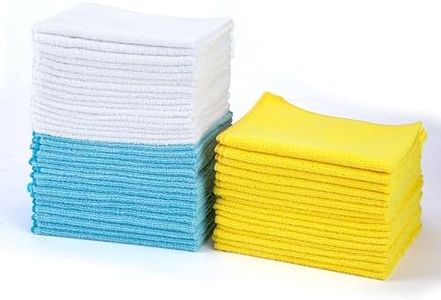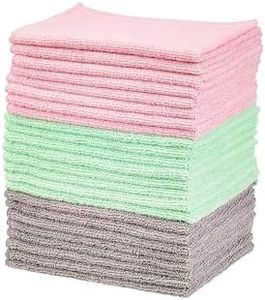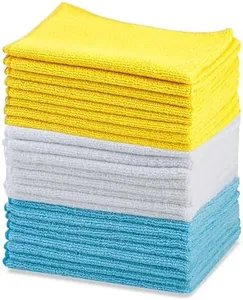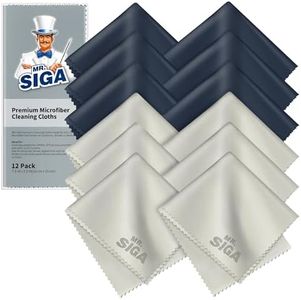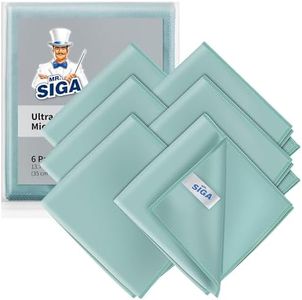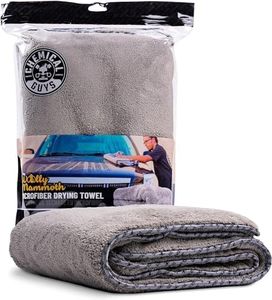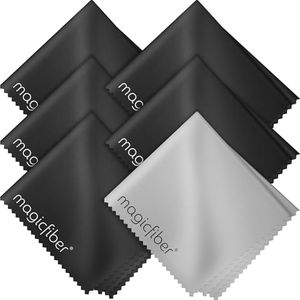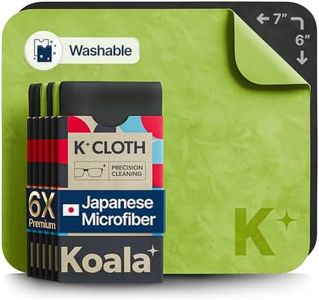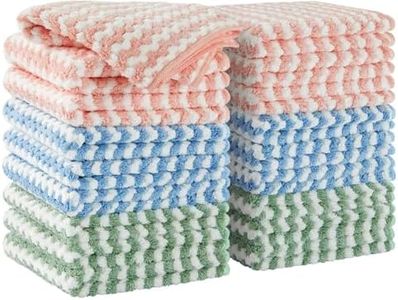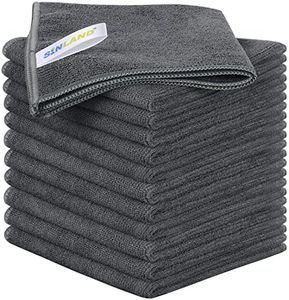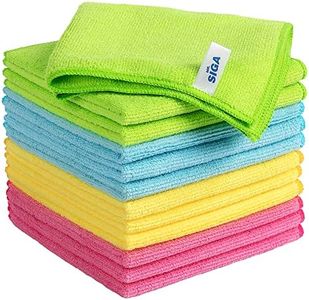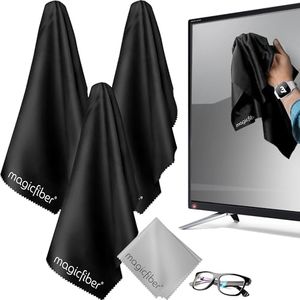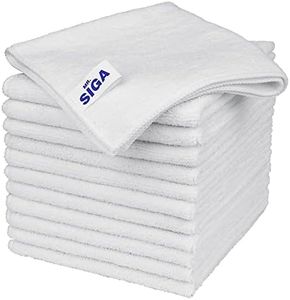We Use CookiesWe use cookies to enhance the security, performance,
functionality and for analytical and promotional activities. By continuing to browse this site you
are agreeing to our privacy policy
10 Best Microfiber Cloths
From leading brands and best sellers available on the web.Buying Guide for the Best Microfiber Cloths
Choosing the right microfiber cloth can make a big difference in cleaning efficiency, surface safety, and durability. Microfiber cloths are popular because they are good at picking up dust, absorbing liquids, and being gentle on surfaces, which makes them ideal for a range of everyday tasks from wiping counters to detailing cars. Understanding the key features will help you select a cloth that best matches your cleaning needs.GSM (Grams per Square Meter)GSM stands for grams per square meter and refers to the weight and density of the microfiber fabric. A higher GSM means the cloth is denser and can absorb more moisture and hold onto more dirt. Lighter cloths, typically around 200-300 GSM, are better for general dusting, computer screens, and light chores. Medium GSM, usually in the 300-400 range, strikes a balance between absorbency and ease of use and works well for wiping counters or cleaning glass. High GSM cloths, 400 and above, are plush, very absorbent, and ideal for heavy-duty cleaning such as drying cars or mopping up spills. Choose a lower GSM for delicate tasks, a medium GSM for versatile household chores, and a high GSM when you want maximum absorbency.
Blend Ratio (Polyester/Polyamide)The blend ratio tells you how much polyester and polyamide (nylon) are present in the microfiber cloth. Common ratios are 80/20 and 70/30. More polyamide increases the cloth’s softness and absorbency, while higher polyester content boosts durability and scrubbing power. An 80/20 ratio is suitable for most everyday cleaning, offering a good mix of absorbency and strength. If you want a super soft cloth for delicate surfaces, such as eyeglasses or screens, a 70/30 ratio is gentler and absorbs more liquid. Think about what you’re cleaning: tougher jobs can handle higher polyester, while sensitive surfaces benefit from extra polyamide.
Weave TypeMicrofiber cloths come in different weaves, such as flat weave, waffle weave, and plush pile. Flat weave cloths are thin and smooth and work best for polishing or cleaning glass because they don't leave lint. Waffle weave cloths have a texture that increases absorbency, making them good for drying or cleaning up spills. Plush pile cloths are thick and fluffy, ideal for dusting, buffing, or cleaning sensitive surfaces without scratching. To pick the right weave, match the cloth to your main tasks: use flat weave for streak-free surfaces, waffle for soaking up bigger messes, and plush pile for gentle cleaning and dusting.
SizeThe size of the cloth determines how much area you can cover at once and how easy it is to handle. Smaller cloths, such as 12 x 12 inches, are ideal for detailed cleaning jobs, like wiping eyeglasses or electronics. Medium-sized cloths, around 16 x 16 inches, are the most versatile and fit comfortably in hand for tasks like wiping counters or bathrooms. Larger cloths, bigger than 16 x 20 inches, work best for jobs where you need to cover large surfaces, like drying a car or cleaning windows. Consider the main areas you want to clean and pick a size that will be efficient and convenient for you.
EdgingThe edging or border of a microfiber cloth is important for durability and for protecting the surfaces you clean. Stitched borders are strong and prevent fraying, making them last longer, but they might be rougher on delicate surfaces. Ultrasonic cut or silk/satin edges are softer and less likely to scratch but can be less durable over time. If you often clean sensitive surfaces, such as car paint or electronics, choose a cloth with a soft or edgeless finish. For routine cleaning where durability is more important than delicacy, stitched edges are a practical choice.
